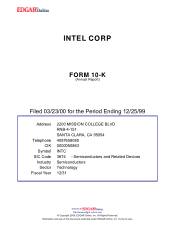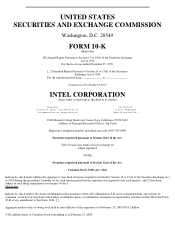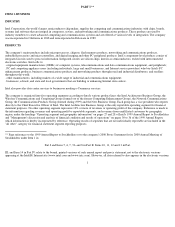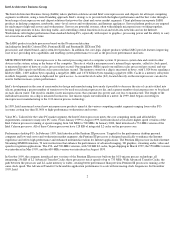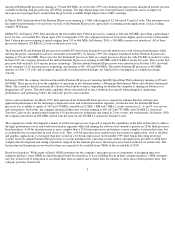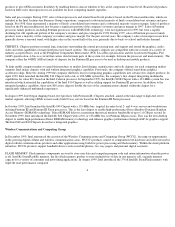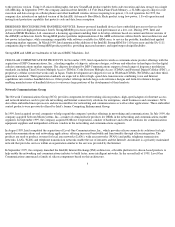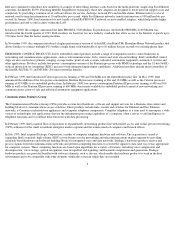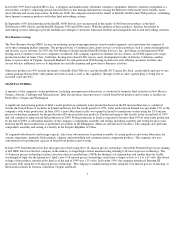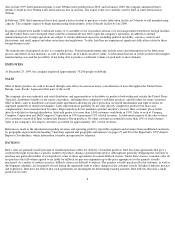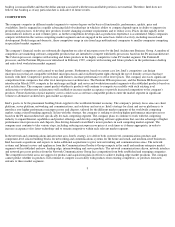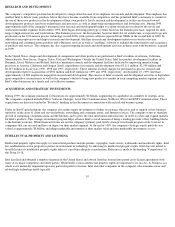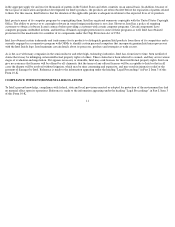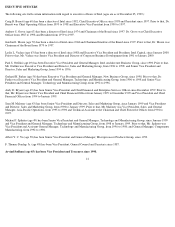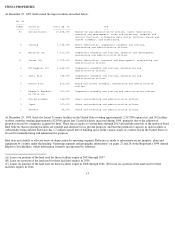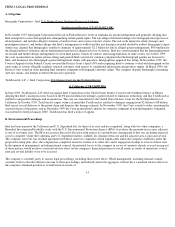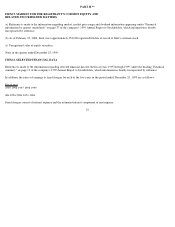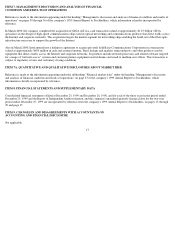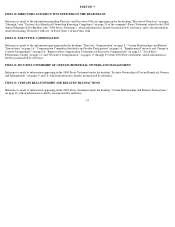Intel 1999 Annual Report Download - page 11
Download and view the complete annual report
Please find page 11 of the 1999 Intel annual report below. You can navigate through the pages in the report by either clicking on the pages listed below, or by using the keyword search tool below to find specific information within the annual report.Also in June 1999, Intel announced plans to start 300mm wafer production in 2002, and in January 2000, the company announced that it
intends to build its first 300mm wafer fabrication facility in Arizona. The largest wafer size currently used by Intel in wafer fabrication is
200mm.
In February 2000, Intel announced that it had signed a letter of intent to purchase a wafer fabrication facility in Colorado to add manufacturing
capacity. The company expects to begin manufacturing flash memory at the Colorado facility by late 2000.
In general, if Intel were unable to fabricate wafers or to assemble or test its products abroad, or if air transportation between its foreign facilities
and the United States were disrupted, there could be a material adverse effect upon the company's operations. In addition to normal
manufacturing risks, foreign operations are subject to certain additional exposures, including political instability, currency controls and
fluctuations, and tariff, import and other restrictions and regulations. To date, Intel has not experienced significant difficulties related to these
foreign business risks.
The manufacture of integrated circuits is a complex process. Normal manufacturing risks include errors and interruptions in the fabrication
process and defects in raw materials, as well as other risks, all of which can affect yields. A substantial decrease in yields would result in higher
manufacturing costs and the possibility of not being able to produce a sufficient volume of good units to meet demand.
EMPLOYEES
At December 25, 1999, the company employed approximately 70,200 people worldwide.
SALES
Most of Intel's products are sold or licensed through sales offices located near major concentrations of users throughout the United States,
Europe, Asia- Pacific, Japan and other parts of the world.
The company also uses industrial and retail distributors and representatives to distribute its products both within and outside the United States.
Typically, distributors handle a wide variety of products, including those competitive with Intel products, and fill orders for many customers.
Most of Intel's sales to distributors are made under agreements allowing for price protection on unsold merchandise and right of return on
stipulated quantities of unsold merchandise. Sales representatives generally do not offer directly competitive products but may carry
complementary items manufactured by others. Representatives do not maintain a product inventory; instead, their customers place orders
directly with Intel or through distributors. Intel sold products to more than 1,000 customers worldwide in 1999. Sales to each of Compaq
Computer Corporation and Dell Computer Corporation in 1999 represented 13% of total revenues. A substantial majority of the sales to these
two customers consisted of Intel Architecture Business Group products. No other customer accounted for more than 10% of total revenues.
Sales to the company's five largest customers accounted for approximately 44% of total revenues.
Reference is made to the information regarding revenues and operating profit by reportable segments and revenues from unaffiliated customers
by geographic region under the heading "Operating segment and geographic information" on pages 27 and 28 of the Registrant's 1999 Annual
Report to Stockholders, which information is hereby incorporated by reference.
BACKLOG
Intel's sales are primarily made pursuant to standard purchase orders for delivery of standard products. Intel has some agreements that give a
customer the right to purchase a specific number of products during a specified time period. Although not generally obligating the customer to
purchase any particular number of such products, some of these agreements do contain billback clauses. Under these clauses, customers who do
not purchase the full volume agreed to are liable for billback on previous shipments up to the price appropriate for the quantity actually
purchased. As a matter of industry practice, billback clauses are difficult to enforce. The quantity actually purchased by the customer, as well as
the shipment schedules, are frequently revised during the agreement term to reflect changes in the customer's needs. In light of industry practice
and experience, Intel does not believe that such agreements are meaningful for determining backlog amounts. Intel believes that only a small
portion of its order
8

